For the past several months I’ve had a great opportunity: working with a group of teenagers; showing them how to train, work with and ride their horses at a ranch operated by the Poteet family in west-central Alberta.

This is a great group of kids who enjoy having fun and learning with horses. The work that I’m doing is no different than I teach in my clinics or individual lessons. We focus on clear and concise leadership, learning the language of the horse and then having fun with our equine partners though the connection that we build.
Coralee Poteet explains their operation and discusses why they chose to integrate horses into their program. “We are a specialized foster home working with at-risk youth. We run a live-in program that works with teenage girls to give them the foundation for a healthy life. We teach life skills, self-care, healthy social patterns and help each person work through family of origin behaviour patterns and belief systems so that they can form their own healthy style of living.

Originally we chose horses because we were working with a number of kids with Reactive Attachment Disorder. Kids with RAD have trouble forming attachments and maintaining even superficial relationships; however, there have been many studies done showing that if a child with RAD can form a connection with a horse they can then use that connection as a bridge to form attachments with people.”
Well these girls are certainly forming connections with horses. What I’ve witnessed in the past few months is that they’re also growing in other ways: developing leadership and experiencing pride in their accomplishments with the horses. A few students tended to hide within themselves when in the group with horses. But I don’t see that anymore. Those that were staring at the ground and shy about coming out of their shell have found internal strengths and leadership skills that really work for their horses…and undoubtedly other facets of their lives.

When horses experience concise, positive and consistent leadership, they love it. They’ll relax. They’ll lick, chew and yawn.
Why ?
Because we’ve addressed and answered their questions and concerns about the herd and where they belong in it. Muddy and grey interactions with humans drive them nuts, because the herd dynamic isn’t clear.
The great benefit is that the students can SEE and FEEL these amazing results in their horses and KNOW that they are the ones that caused it.
Wow.
As a trainer and instructor, nothing makes me more happy than to witness students realizing that what they have done has taken their horse to a new level of peace and athletic ability.
Coralee adds some other understandings regarding the relationship with horses. “We have taken many different training courses that highlight the benefit of regular interactions with horses.  They are a somatic reconditioning agent- their breathing, heartbeat, and electromagnetic field are so strong that they can influence and regulate people and animals standing within a 15 foot radius. Horses are a mirror for what’s going on internally- they reflect whatever mental and emotional process is going on inside the person that is working with them, and their responses to their worker’s requests directly correlate with what the trainer believes.”
They are a somatic reconditioning agent- their breathing, heartbeat, and electromagnetic field are so strong that they can influence and regulate people and animals standing within a 15 foot radius. Horses are a mirror for what’s going on internally- they reflect whatever mental and emotional process is going on inside the person that is working with them, and their responses to their worker’s requests directly correlate with what the trainer believes.”
 This is really the essence of leadership isn’t it?We desire that our followers emulate us. In order to have the occur with a horse, we have to present ourselves – both physically and emotionally – in the way we want our horses to follow. We want our horses to be a mirror of us. My most recent article on leadership speaks to this as well. I find it not only intriguing, but refreshing, that the training that the Poteets have received so closely
This is really the essence of leadership isn’t it?We desire that our followers emulate us. In order to have the occur with a horse, we have to present ourselves – both physically and emotionally – in the way we want our horses to follow. We want our horses to be a mirror of us. My most recent article on leadership speaks to this as well. I find it not only intriguing, but refreshing, that the training that the Poteets have received so closely
mirrors our style of horsemanship.
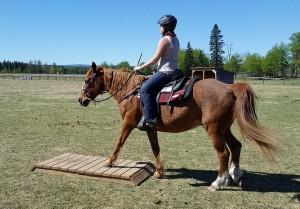 Coralee explains, “Since working with Scott it’s become easier to see the relationship between the inner process of the human and the outer response of the horse. Everyone involved is learning how to be a supportive, compassionate, and firm leader; and understanding that it’s not about getting the horse to be perfect, but to do everything well- even fear, frustration, and anxiety- is reflected in the way that our girls treat each other and themselves.
Coralee explains, “Since working with Scott it’s become easier to see the relationship between the inner process of the human and the outer response of the horse. Everyone involved is learning how to be a supportive, compassionate, and firm leader; and understanding that it’s not about getting the horse to be perfect, but to do everything well- even fear, frustration, and anxiety- is reflected in the way that our girls treat each other and themselves.
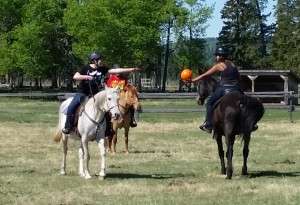
Our horses are also more relaxed. They have more try and more to give. They are better and more clearly understood by the people working with them, and I think that promotes an atmosphere of calmness and forgiveness on the part of the horse.”
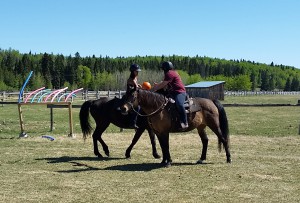 One of my fundamental principles of horsemanship is that our job as trainers and riders is to focus on the success of the horse, not the success of ourselves. In developing our skills and producing successful horses, we realize incredible benefits: we hone our leadership skills. Our timing becomes more precise. We truly learn how to communicate with a horse and we progress to higher levels as a result of a real connection that we’ve produced through our own efforts.
One of my fundamental principles of horsemanship is that our job as trainers and riders is to focus on the success of the horse, not the success of ourselves. In developing our skills and producing successful horses, we realize incredible benefits: we hone our leadership skills. Our timing becomes more precise. We truly learn how to communicate with a horse and we progress to higher levels as a result of a real connection that we’ve produced through our own efforts.
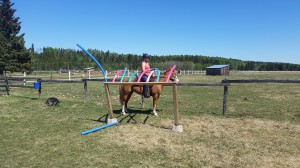
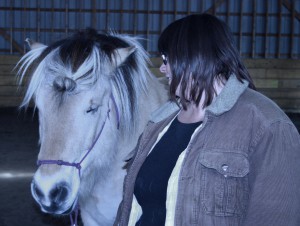
This is a fun dynamic group to work with. The girls are progressing in leaps and bounds. We’ve recently started introducing obstacles and games to our training. Just like our clinics, it’s great to develop these essential horsemanship skills, but putting them to practice in a way that produces fun and success for all is truly the icing on the cake.
Here’s a big “WAY TO GO” to the Poteet family, their girls and their horses!
Thank you for the opportunity to work with you and share in your success!
Scott Phillips, May 2016
